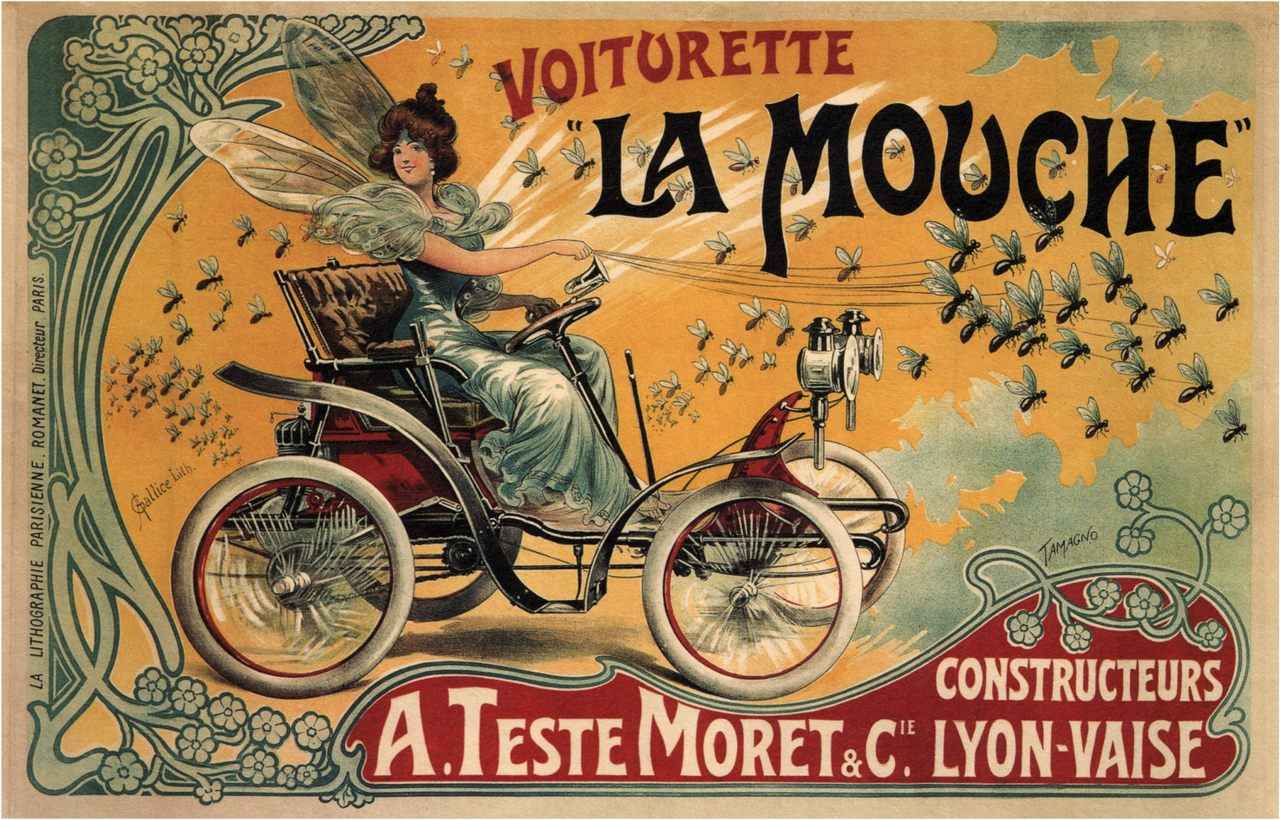How Women Used Cars To Fuel Female Empowerment
From a 1915 suffragist road trip to the “First Lady of Drag Racing.”
Excerpted and adapted with permission from Women Behind the Wheel: An Unexpected and Personal History of the Car by Nancy A. Nichols, published March 5, 2024 by Pegasus Books. All rights reserved.
In 1888 Mannheim, Germany, when 39-year-old Bertha Benz grew tired of her husband’s timidity and procrastination and even more tired of footing the bill for his innovative yet time-consuming invention of the automobile, she took his “Patent Motor Wagon” without his knowledge and set out at dawn to visit her mother just over 60 miles away.
In that early primitive vehicle—which to modern eyes resembles little more than a giant motorized tricycle—she and her two sons took what is now widely regarded as the first-ever road trip.
During the 12-hour ride, she garnered a great deal of attention for her husband’s invention and surprised everyone with her mechanical know-how by using her hatpin to unclog a blocked fuel line and in what one auto enthusiast called the “height of eroticism” sheathed the car’s worn ignition cable with her garter.
In old German—the country where Bertha’s husband, Karl Benz, developed one of the first automobiles—the words for “speed” and “progress” share the same root verb. Progress or forward motion, often in a car at great speed, would become the watchword of the 20th century. Women, however, had to proceed with caution.

Women, after all, were never quite handed le droit à la ville, the right to walk aimlessly within the walls of the old city without being challenged, threatened, or hassled. As Lauren Elkin points out in her book Flâneuse: Women Walk the City in Paris, New York, Tokyo, Venice, and London, historically a woman on the streets was most likely a prostitute, and even her movements were strictly regulated.
Women started to appear in public more frequently with the advent of the bicycle, but it was the car that gave them prominence both in terms of visibility and in terms of power. “Women never explicitly demanded the droit de la ville, the medieval right to the freedom of the city that distinguished urban citizens from feudal serfs,” Elkin writes. But “the auto had the potential to help some women claim that right, most without ever demanding it.”
For that reason, when women began to embrace the automobile—taking to the streets for pleasure or to meet work, family, and farm obligations—their reception was frosty. Wealthy women went first, protected by their class status, followed by rural women, who fought isolation and destitution and quite simply needed to get stuff done.
Fear of women drivers was less about concern over car accidents and more about discouraging a behavior that was widely threatening not just to men, but to the larger social structure in general. “From the beginning,” historian Michael Berger writes, “everything about the car seemed masculine, from the coordination and strength required to operate it, to the dirt and grease connected with its maintenance.”
That is likely why women chose the car as the proper symbol of their independence. For example, in their quest for the right to vote, female suffragists completed a widely publicized trip across the United States in 1915 in an Overland car provided by the company.
“The sight of the car, with its worn banners, luggage roped on to the running boards, and the western mud and dust carefully preserved to heighten its effect, allowed the suffragists to stage a highly stylized performance of female independence, transcontinental solidarity, and sexual equality,” historian Georgine Clarsen states in Eat My Dust: Early Women Motorists. “It was a nonverbal vocabulary of entitlement and social change, perfectly intelligible and easily read by people in the streets.”
The Overland Automobile Company was quick to capitalize on the women’s achievement, feeding to local newspapers details of the women’s trips and specifics about the car they drove and what they wore, setting in motion the beginnings of a long line of automobile promotions aimed at women, and linking forever social striving with the right car.

Despite their extraordinary efforts, women drivers were often the butt of jokes and downright intimidation. Men thought women too weak, too emotionally unstable, to be on the road. The fear of women drivers, like most myths, probably also had some basis in fact. Not because women lacked skill, competence, or emotional stability, but more because early machinery was difficult to operate—for everyone.
Early cars were hard to crank and even harder to steer. Likely most readers of this book have never driven a car without power steering and enhanced suspension, and it is worth remembering here that the super-smooth superhighways that we have come to know and expect are a post–World War II phenomenon, one that is a far cry from the rutted, muddy roads that early women drivers had to navigate.
Almost all histories of motoring locate the introduction of the electric starter motor as the turning point for women motorists. According to an account in the Cadillac Craftsman, a trade paper produced by the company, Cadillac president Henry Leland asked electrical engineer Charles Kettering to produce an electric starter in 1910.
As Clarsen tells us: “One could easily theorize that Charles Franklin Kettering did more to emancipate women than all the feminists of the day. Before his invention, women could drive if the engine were running. But the lusty Amazons who could crank one were very few indeed. Then in one broad stroke, the dainty female toe became as powerful as the brawny male arm.” And that changed everything.

Women, who fought at every turn for the right to drive, were most definitely not given the right to speed. Racing was by and large the privilege of wealthy men. Yet there were a handful of exceptional women who embraced speed, danger, and multiple sexual partners.
Hellé Nice, the daughter of a French postman, raced in the 1920s and 1930s all over Europe, sponsored by the luxury carmaker Bugatti, leading her biographer, Miranda Seymour, to dub her “the Bugatti Queen.” The former stripper was the lover of Philippe de Rothschild, who lent her his own Bugatti and then introduced her to famed carmaker Ettore Bugatti, who sponsored her racing efforts in a bid to get wealthy women interested in his cars.
After winning the 1929 Grand Prix Féminin, she stopped for a moment to fix her makeup, pierce the blisters that had formed on her hands during the race, and change into an elegant gown, before telling journalists with much sexual innuendo that the pleasure she most adored was “the feeling of a great engine roaring and under your control.” After Nice set an early land speed record, the French sporting newspaper L’Auto called her “une conductrice de Valeur,” or a very fine driver, and then added, for a woman.
Nice would later be involved in a horrific accident in São Paulo that killed four and injured 36 spectators. Toward the end of her career, Nice raced in an Alfa Romeo designed for her by one of her many lovers—it was a shocking turn of events for the auto press that a French woman could triumph in an Italian car. In the wake of World War II, a male race car driver’s claims that Nice had been a Nazi sympathizer would end her career and Nice would die penniless, reportedly stooping to steal milk out of a cat’s saucer to survive.

Florida native Betty Skelton, who first made her name as an aerobatic pilot, later went on to set a stock car record in a 1954 Dodge Red Ram V8. She went on to set the women’s land speed record with a 430 kph (276 mph) average. Skelton earned four feminine world land speed records and set a transcontinental speed record.
Another favorite is Jacqueline Evans de Lopez, who raced in the 1960s in the rugged Carrera Panamericana—a border-to-border race in Mexico—in her Porsche adorned with the likeness of Eva Perón.
But the woman I remember most was Shirley “Cha Cha” Muldowney. Muldowney sometimes raced at the track my brother frequented and they called her the “First Lady of Drag Racing.” I remember watching her get towed to the line in her pink dragster.
Watching Muldowney race was one of my first lessons in feminism. While most of the macho culture and noise of racing was intimidating to me, there amongst the smoke and the dirt was a petite woman. While I didn’t understand what feminism was, it was hard to miss her brash appeal. I kept a small picture she signed for me on the wall of my bedroom.
While most of the women in the stands boasted hot pants, halter tops, and hoop earrings, Shirley—my girlhood idol—was playing a man’s game and winning. All told, she would win 18 national titles. For young girls growing up in the Midwest in the 1960s and 1970s, Shirley was likely the first woman we ever saw break a gender stereotype. Moreover, she looked like she was having fun while doing it.















Follow us on Twitter to get the latest on the world's hidden wonders.
Like us on Facebook to get the latest on the world's hidden wonders.
Follow us on Twitter Like us on Facebook